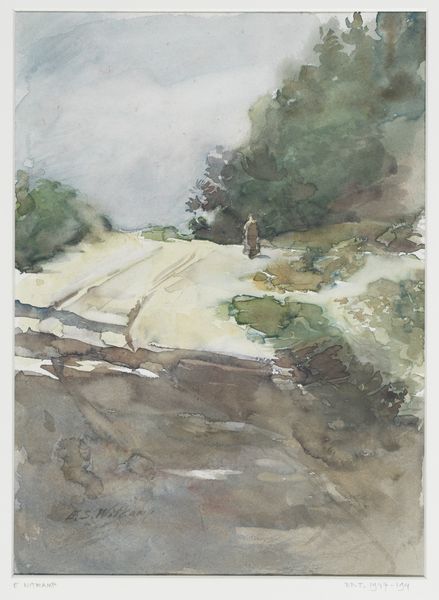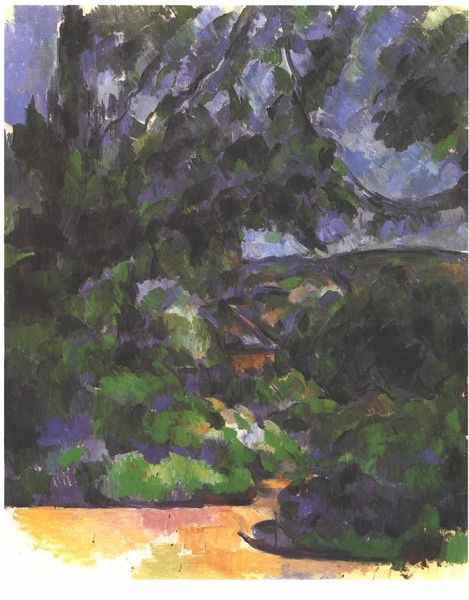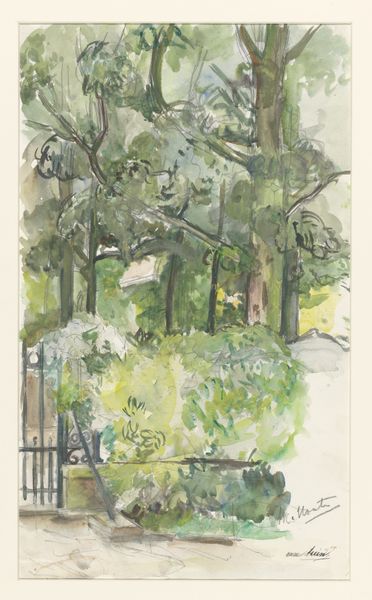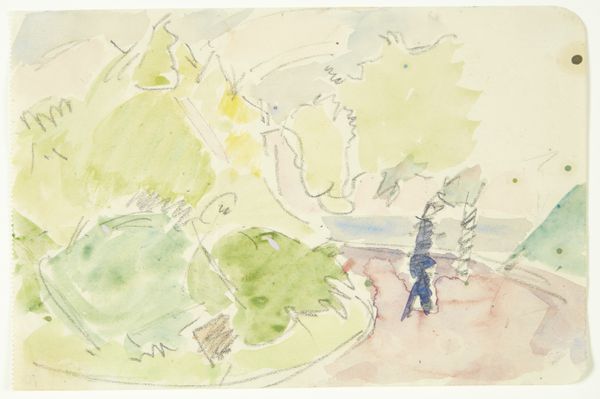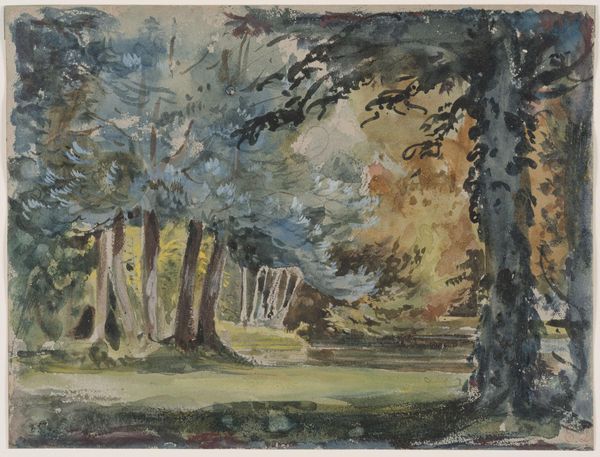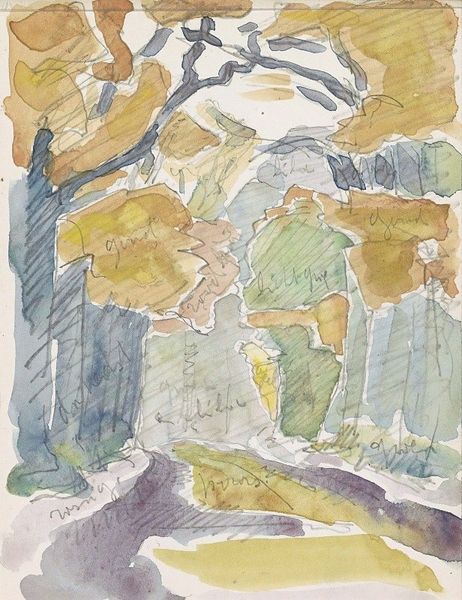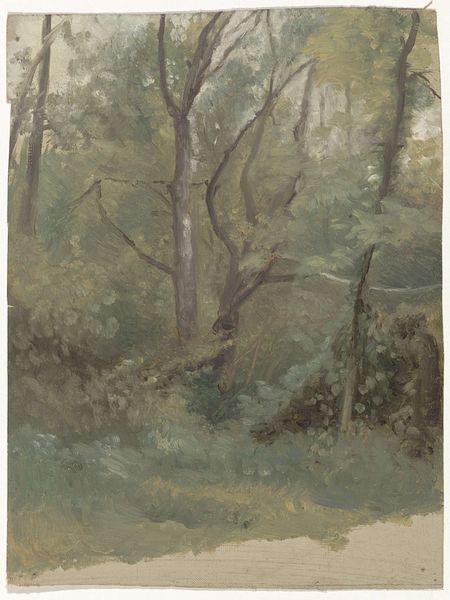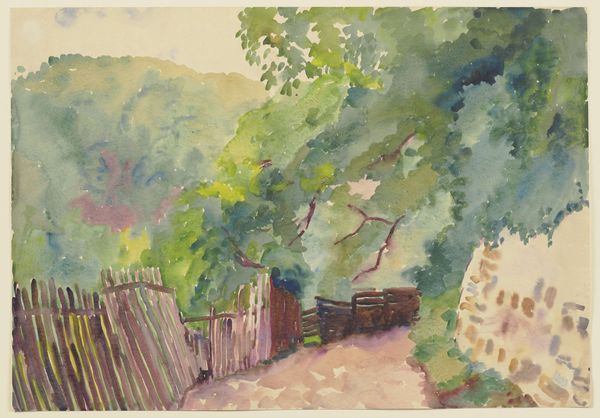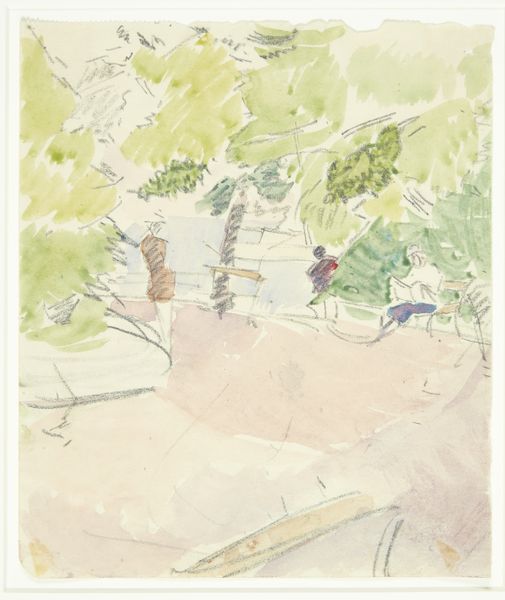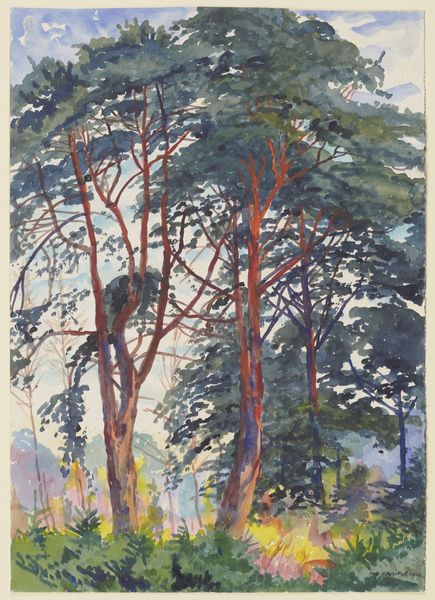
drawing, painting, plein-air, watercolor
#
drawing
#
painting
#
impressionism
#
plein-air
#
landscape
#
watercolor
#
realism
Dimensions: 11 3/8 x 8 3/4 in. (28.89 x 22.23 cm) (sheet)
Copyright: Public Domain
Curator: It’s hard not to immediately feel soothed by this image. There’s a softness, a quietude that emanates from it. Editor: Indeed. What you're experiencing is no accident. What we're seeing is Gustave Achille Guillaumet's "View near Barbizon," dating from about 1878 to 1880. He has deployed watercolor on paper to achieve that affect, a medium which can tend towards airy openness. Curator: It definitely does. Barbizon, of course, rings a bell. A painting location? Editor: Precisely. The Barbizon school was known for their plein-air landscape paintings, seeking a sort of unmediated experience of nature and the French countryside. The location outside of Paris was a meeting place for artists drawn to more realistic representations of the everyday. Curator: This location seems pregnant with meaning, a crossroads of nature and humanity in many ways. It seems that those involved also considered a break from rigid academic tradition, and so these sorts of intimate, impressionistic sketches hold all the more iconographic heft. Look at the trees that are painted in such deep colors. The forest is so inviting with dappled shadows, almost mystical in that it’s promising respite from daily life. Editor: And those huge stones anchored to the foreground seem almost permanent compared to the ephemeral nature of plein-air technique! What kind of societal longing do you imagine for these quiet pastoral scenes? I mean, France was in turmoil during this period. Curator: You make a strong point. This artwork is created not that long after the Franco-Prussian War. And so, what visual continuities are consciously constructed into landscape painting to create continuity and cohesion when it feels lacking socially? Perhaps something akin to collective self-soothing through art? Editor: Perhaps the symbolic promise of land ownership too? Access to landscape continues to be stratified along social, racial, and economic lines to this day. In that light, this looks less soothing to me and more of an idealization of a world to which many are systematically denied entry. Curator: You always push us to look beneath the surface and towards a more encompassing vision of class relations that is always at play. I will meditate more on it. Thank you for helping unpack the symbolic potency of this "View Near Barbizon." Editor: It’s always helpful to excavate and reflect, finding both cultural touchstones and moments of critique. I’m grateful to learn along with you.
Comments
minneapolisinstituteofart almost 2 years ago
⋮
Gustave-Achille Guillaumet studied at the Ecole des Beaux-Arts and exhibited regularly at the Paris Salon beginning in 1861. He led a successful career and was awarded the Legion of Honor in 1878. Guillaumet is best known as an Orientalist for his many paintings of North Africa. In all his works, including this watercolor, Guillaumet is interested in the problems of light and atmosphere. In View near Barbizon, he magnifies a small fragment of the Forest of Fontainebleau and uses watercolor to examine the ways in which light filters through the leaves and branches of the trees.
Join the conversation
Join millions of artists and users on Artera today and experience the ultimate creative platform.

